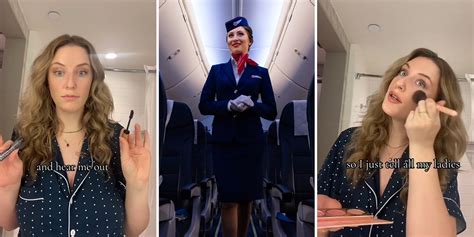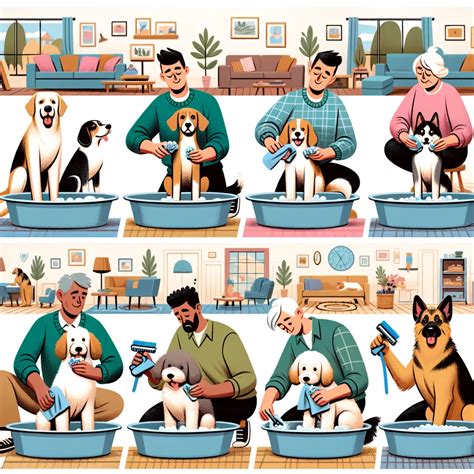
Wearing shorts on an airplane might seem like a comfortable choice, but a flight attendant is warning passengers against it, citing hygiene concerns related to the cleanliness of airplane seats.
A flight attendant is advising travelers to reconsider wearing shorts on airplanes, warning that direct skin contact with airplane seats could expose passengers to unsanitary conditions. The flight attendant, who uses the handle @tomscullyy on TikTok, shared her cautionary advice in a viral video, emphasizing that while comfort is important, hygiene should take precedence when flying. This warning has sparked discussion among frequent flyers and travel experts, highlighting the potential risks associated with airplane seat cleanliness.
The flight attendant’s warning stems from observations and experiences within the airline industry, where quick turnaround times between flights often limit the extent of cleaning and sanitation. According to the flight attendant, “You never know how clean it’s going to be,” indicating that airplane seats may harbor bacteria and germs from previous passengers.
This advice aligns with existing concerns about the overall cleanliness of airplanes. Numerous studies and reports have highlighted the presence of bacteria, viruses, and other microbes on various surfaces within the aircraft cabin, including tray tables, seatbelt buckles, and overhead bins. While airlines have implemented cleaning protocols, the effectiveness of these measures can vary, particularly during peak travel seasons when flights are frequent and tightly scheduled.
The flight attendant’s recommendation has resonated with many travelers, prompting discussions about best practices for maintaining hygiene during air travel. These include using sanitizing wipes on surfaces, carrying hand sanitizer, and wearing clothing that provides a barrier between the skin and potentially contaminated surfaces. Travel experts support these practices, emphasizing that proactive hygiene measures can significantly reduce the risk of exposure to germs while flying.
Hygiene on Airplanes: A Growing Concern
Concerns about hygiene on airplanes are not new, but they have gained increased attention in recent years due to global health events and heightened awareness of germ transmission. Airplanes, being enclosed spaces with high passenger turnover, present an environment conducive to the spread of bacteria and viruses.
Several studies have investigated the types and concentrations of microbes found on airplane surfaces. A study published in the journal “Applied and Environmental Microbiology” found that surfaces such as tray tables and seat pockets harbored a variety of bacteria, including those resistant to antibiotics. The study emphasized the importance of regular and thorough cleaning to minimize the risk of transmission.
Another study conducted by Auburn University found that certain bacteria, such as MRSA and E. coli, can survive for extended periods on airplane surfaces, ranging from several days to weeks. This underscores the potential for passengers to come into contact with infectious agents even after a surface has been used by multiple individuals.
Airlines are aware of these concerns and have implemented cleaning protocols to address them. These protocols typically involve the use of disinfectants to sanitize surfaces, as well as the regular cleaning of restrooms and other high-touch areas. However, the frequency and thoroughness of cleaning can vary depending on factors such as flight schedules, staffing levels, and budgetary constraints.
During peak travel seasons, when flights are often fully booked and turnaround times are short, airlines may face challenges in maintaining optimal cleaning standards. This can result in a greater risk of exposure to germs for passengers, particularly on long-haul flights where individuals are confined to the aircraft cabin for extended periods.
Expert Recommendations for Staying Healthy on Flights
Given the potential risks associated with airplane hygiene, travel experts recommend that passengers take proactive steps to protect themselves from germs. These recommendations include:
- Sanitizing Wipes: Use sanitizing wipes to clean surfaces such as tray tables, armrests, seatbelt buckles, and entertainment screens. This can help to reduce the number of bacteria and viruses that come into contact with your skin.
- Hand Sanitizer: Carry a travel-sized bottle of hand sanitizer and use it frequently, especially after touching surfaces or interacting with other passengers. Hand sanitizer should contain at least 60% alcohol to be effective against most germs.
- Avoid Touching Your Face: Refrain from touching your face, especially your eyes, nose, and mouth, as this is a common way for germs to enter the body.
- Stay Hydrated: Drink plenty of water to stay hydrated, as dehydration can weaken the immune system and make you more susceptible to illness.
- Wear a Mask: Consider wearing a mask, especially during peak travel seasons or if you have a compromised immune system. Masks can help to prevent the spread of respiratory droplets that may contain viruses or bacteria.
- Choose Appropriate Clothing: As the flight attendant recommends, wearing clothing that provides a barrier between your skin and airplane seats can help to minimize exposure to germs. Long pants and long-sleeved shirts are preferable to shorts and tank tops.
- Use Seat Covers: Some travelers choose to use disposable seat covers to create an additional barrier between their skin and the seat. While seat covers may not eliminate all germs, they can provide a sense of security and reduce direct contact with potentially contaminated surfaces.
- Boost Your Immune System: Prior to your flight, take steps to boost your immune system by getting enough sleep, eating a healthy diet, and taking vitamins or supplements if needed. A strong immune system can help you to fight off any germs you may encounter during your travels.
Airline Cleaning Practices: An Overview
Airlines employ various cleaning practices to maintain hygiene standards on their aircraft. These practices can be categorized into routine cleaning, deep cleaning, and disinfection.
- Routine Cleaning: Routine cleaning typically occurs between flights and involves tasks such as removing trash, wiping down surfaces, and vacuuming carpets. The frequency and thoroughness of routine cleaning can vary depending on the airline and the length of the turnaround time between flights.
- Deep Cleaning: Deep cleaning is a more comprehensive process that is typically performed less frequently, such as overnight or during scheduled maintenance. Deep cleaning involves tasks such as shampooing carpets, cleaning upholstery, and disinfecting all surfaces.
- Disinfection: Disinfection involves the use of chemical agents to kill bacteria, viruses, and other microbes. Airlines may use disinfectants on a regular basis, especially in high-touch areas such as restrooms and tray tables.
The effectiveness of airline cleaning practices can be influenced by several factors, including the type of cleaning products used, the training of cleaning staff, and the availability of resources. Airlines are subject to regulations and guidelines from aviation authorities regarding cleaning and hygiene standards, but the enforcement of these standards can vary.
The Impact of COVID-19 on Airplane Cleaning
The COVID-19 pandemic has led to significant changes in airline cleaning practices, with airlines implementing enhanced measures to protect passengers and crew from the virus. These measures have included:
- Increased Frequency of Cleaning: Airlines have increased the frequency of cleaning and disinfection, with some airlines cleaning aircraft between every flight.
- Use of Hospital-Grade Disinfectants: Many airlines have switched to using hospital-grade disinfectants that are effective against a wide range of viruses and bacteria, including SARS-CoV-2, the virus that causes COVID-19.
- Electrostatic Spraying: Some airlines have adopted electrostatic spraying technology, which involves using a specialized sprayer to apply disinfectant to surfaces. Electrostatic spraying can provide more thorough coverage and ensure that even hard-to-reach areas are disinfected.
- HEPA Filters: Most modern aircraft are equipped with High-Efficiency Particulate Air (HEPA) filters, which can remove up to 99.97% of airborne particles, including viruses and bacteria. HEPA filters help to maintain air quality within the aircraft cabin and reduce the risk of transmission.
- Contactless Procedures: Airlines have implemented contactless procedures to minimize physical contact between passengers and staff. These procedures include online check-in, mobile boarding passes, and contactless payment options.
While these enhanced cleaning measures have improved hygiene on airplanes, it is still important for passengers to take proactive steps to protect themselves from germs. The flight attendant’s advice to avoid wearing shorts on airplanes is just one example of how passengers can reduce their risk of exposure to unsanitary conditions.
Alternative Perspectives on Airplane Hygiene
While the flight attendant’s warning about wearing shorts on airplanes has gained attention, it is important to consider alternative perspectives on airplane hygiene. Some experts argue that the risk of contracting an illness from airplane seats is relatively low, especially compared to other environments such as public transportation or crowded events.
These experts point out that airlines have implemented cleaning protocols and that the air filtration systems on modern aircraft are highly effective at removing airborne particles. They also note that the human immune system is capable of fighting off many germs and that most people are exposed to a variety of microbes on a daily basis without becoming ill.
However, even if the risk of contracting an illness from airplane seats is low, it is still prudent to take precautions to protect yourself from germs. The flight attendant’s advice to avoid wearing shorts is a simple and practical way to minimize direct contact with potentially contaminated surfaces. Other measures, such as using sanitizing wipes and hand sanitizer, can also help to reduce your risk of exposure.
Ultimately, the decision of whether or not to wear shorts on an airplane is a personal one. Some travelers may feel comfortable wearing shorts and not be concerned about the potential hygiene risks, while others may prefer to wear long pants as a precautionary measure. It is important to weigh the potential risks and benefits and make a decision that is right for you.
Consumer Reactions and Travel Trends
The flight attendant’s viral video has sparked diverse reactions among travelers. Some have expressed gratitude for the advice, stating they will reconsider their clothing choices for future flights. Others have dismissed the warning as overly cautious, emphasizing personal comfort and previous uneventful experiences wearing shorts on planes.
This debate reflects a broader trend in travel, where awareness of hygiene and health considerations is increasingly influencing consumer behavior. The pandemic amplified concerns about cleanliness and safety, leading to increased demand for travel products and services that prioritize hygiene. Hotels, airlines, and other travel providers have responded by implementing enhanced cleaning protocols and offering amenities such as sanitizing kits and contactless services.
The long-term impact of this trend on travel remains to be seen, but it is likely that hygiene and health considerations will continue to play a significant role in shaping consumer choices and industry practices. Travelers may be more likely to choose airlines and hotels that have a reputation for cleanliness, and they may be willing to pay a premium for enhanced hygiene measures.
The flight attendant’s advice serves as a reminder that while air travel can be convenient and efficient, it is important to be mindful of potential health risks and take steps to protect oneself from germs.
The Role of Advocacy and Education
Advocacy and education play a crucial role in promoting awareness of hygiene issues in air travel and encouraging travelers to adopt best practices for staying healthy. Consumer advocacy groups, travel bloggers, and social media influencers can help to disseminate information about the potential risks associated with airplane hygiene and provide practical tips for minimizing exposure to germs.
Airlines and aviation authorities also have a responsibility to educate passengers about the measures they are taking to maintain hygiene standards and to provide clear and accurate information about the risks of air travel. By working together, stakeholders can create a safer and healthier environment for travelers.
The flight attendant’s viral video is an example of how social media can be used to raise awareness of important issues and encourage positive behavior change. By sharing her experiences and insights, she has prompted travelers to think more critically about their clothing choices and hygiene practices.
As awareness of hygiene issues in air travel continues to grow, it is likely that more travelers will adopt proactive measures to protect themselves from germs. This could lead to a greater demand for products and services that prioritize hygiene, as well as increased pressure on airlines and aviation authorities to maintain high standards of cleanliness.
The bottom line is that while airlines are constantly improving their cleaning procedures and hygiene standards, passengers should always be vigilant and proactive in protecting themselves. This not only includes making smart clothing choices but also involves frequent hand washing, using hand sanitizer, and being mindful of the surfaces they touch.
Beyond Shorts: Other Clothing Considerations
While the flight attendant specifically cautioned against wearing shorts, the principle extends to other clothing choices as well. Opting for long sleeves and pants creates a physical barrier, minimizing direct contact with potentially contaminated surfaces. Consider the fabric, too. Natural fibers like cotton might be more breathable but can also absorb more moisture, potentially harboring germs. Synthetic fabrics might be easier to clean and dry quickly.
Layering is also a good strategy. A light jacket or sweater can be easily removed and stored if you get warm, but it provides an extra layer of protection during boarding and deplaning when you’re most likely to be in close proximity to other passengers and surfaces.
Shoes are another consideration. Walking barefoot, even just to the restroom, should be avoided. The floors can harbor bacteria and fungi, and it’s best to keep your feet covered. Easy-to-clean shoes are ideal.
Choosing the right clothing for air travel is about more than just comfort; it’s about being mindful of potential hygiene risks and taking steps to minimize your exposure.
The Future of Airline Hygiene
The future of airline hygiene is likely to be shaped by a combination of technological advancements, regulatory changes, and evolving consumer expectations.
Technological advancements could lead to the development of new cleaning products and methods that are more effective at killing germs and more environmentally friendly. For example, some companies are exploring the use of ultraviolet (UV) light to disinfect airplane cabins. UV light is a proven disinfectant that can kill bacteria, viruses, and other microbes without the use of chemicals.
Regulatory changes could lead to stricter standards for airline cleaning and hygiene. Aviation authorities could require airlines to use specific cleaning products, implement specific cleaning procedures, and conduct regular audits to ensure compliance.
Evolving consumer expectations could drive airlines to invest more in hygiene and cleanliness. As travelers become more aware of the potential risks associated with airplane hygiene, they may be more likely to choose airlines that have a reputation for cleanliness and to demand higher standards of hygiene.
The COVID-19 pandemic has already had a significant impact on airline hygiene, and it is likely that these changes will continue to shape the industry in the years to come. Airlines are likely to maintain enhanced cleaning measures, such as increased frequency of cleaning and use of hospital-grade disinfectants, and they may continue to implement contactless procedures to minimize physical contact between passengers and staff.
Conclusion: Balancing Comfort and Caution
The flight attendant’s advice to avoid wearing shorts on airplanes highlights the importance of balancing comfort and caution when it comes to air travel. While it may be tempting to prioritize comfort by wearing shorts or other revealing clothing, it is important to be mindful of potential hygiene risks and take steps to minimize your exposure to germs.
By following the recommendations of travel experts and taking proactive measures to protect yourself, you can reduce your risk of contracting an illness and enjoy a safer and healthier travel experience. Whether you choose to wear shorts or not is a personal decision, but it is important to make that decision with a full understanding of the potential risks and benefits.
The key takeaway is that awareness and preparation are crucial for maintaining good health while flying. By taking simple precautions, passengers can significantly reduce their risk of exposure to germs and enjoy a more comfortable and worry-free travel experience. The conversation started by this flight attendant serves as a timely reminder to prioritize hygiene alongside comfort when planning your next trip.
Frequently Asked Questions (FAQ)
-
Why is it not recommended to wear shorts on airplanes, according to the flight attendant?
- The flight attendant advises against wearing shorts due to hygiene concerns. Airplane seats may not be thoroughly cleaned between flights, potentially exposing skin to germs and bacteria from previous passengers. As the flight attendant mentioned, “You never know how clean it’s going to be.”
-
What are some other surfaces on airplanes that are known to harbor germs?
- Besides seats, other surfaces that commonly harbor germs include tray tables, seatbelt buckles, overhead bins, restroom surfaces, and entertainment screens. Studies have shown the presence of various bacteria and viruses on these surfaces.
-
What can I do to protect myself from germs on an airplane besides avoiding shorts?
- You can use sanitizing wipes on surfaces like tray tables and armrests, carry and use hand sanitizer frequently, avoid touching your face, stay hydrated, consider wearing a mask, and choose clothing that provides a barrier between your skin and potentially contaminated surfaces.
-
Are airlines doing anything to improve hygiene on planes?
- Yes, airlines employ cleaning practices such as routine cleaning between flights, deep cleaning less frequently, and disinfection using chemical agents. Since the COVID-19 pandemic, many airlines have increased the frequency of cleaning, use hospital-grade disinfectants, utilize electrostatic spraying, and employ HEPA filters to maintain air quality.
-
Is the risk of getting sick from airplane seats really that high, or is this advice overly cautious?
- While some experts argue that the risk is relatively low compared to other public spaces, it’s still prudent to take precautions. Even if the risk is low, minimizing direct contact with potentially contaminated surfaces, as suggested by the flight attendant, is a simple way to reduce potential exposure to germs. Proactive measures like using wipes and sanitizer further mitigate risks.









